July 31, 2024
Prelims Pointers
July 31, 2024
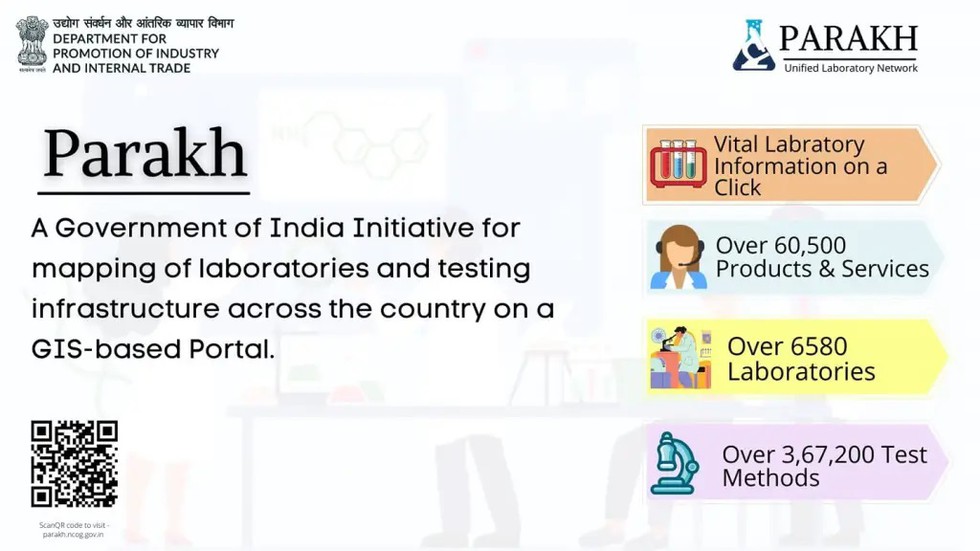
About PARAKH:
- PARAKH (Performance Assessment, Review and Analysis of Knowledge for Holistic Development) is a unit established within NCERT in 2023 to standardise school board assessments nationwide.
- PARAKH team will consist of leading assessment experts with a deep understanding of the education system in India and internationally.
- Objective: To fulfill the basic objectives of setting norms, standards, guidelines and implement activities related to student assessment along with other tasks as mandated by the National Education Policy (NEP) 2020.
- The mandate of PARAKH is to work on bringing the school boards across the States and the Union Territories to a common platform.
- Major areas of focus:
- Capacity Development in Competency Based Assessment
- Large-Scale Achievement Survey
- Equivalence of School Boards
- Holistic Progress Cards for the Foundational, Preparational, Middle and Secondary Stages.
Prelims Pointers
July 31, 2024
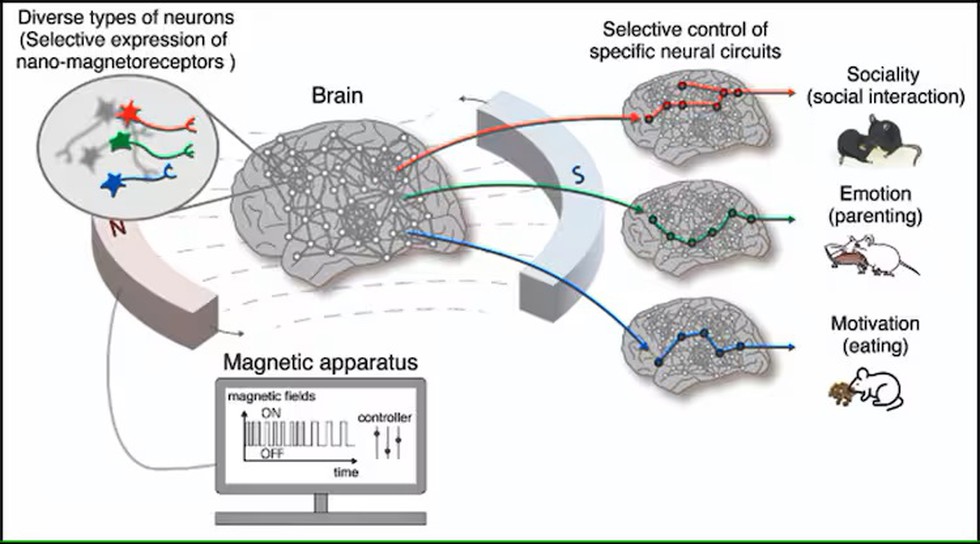
About Nano-MIND Technology:
- Nano-MIND (Magnetogenetic Interface for NeuroDynamics) technology, opens up new possibilities for understanding and manipulating complex brain functions such as cognition, emotion, and motivation.
- It allows for wireless, remote, and precise modulation of specific deep brain neural circuits using magnetism.
- This innovative approach leverages magnetic fields and magnetized nanoparticles to selectively activate targeted brain circuits, offering a significant advancement over existing methods of brain manipulation.
- Highlights of the research
- The research team demonstrated the technology's capabilities by activating specific neurons in different brain regions of mice.
- One notable achievement was the activation of inhibitory GABA receptors in the medial preoptic area (MPOA), which is responsible for maternal behaviours.
- When these neurons were stimulated in non-maternal female mice, the animals exhibited significantly increased nurturing behaviours, mimicking those of maternal mice.
- The researchers also successfully regulated feeding behaviours by targeting motivation circuits in the lateral hypothalamus.
- Activation of inhibitory neurons in this area resulted in a remarkable 100% increase in appetite and feeding behaviours in mice. Conversely, when excitatory neurons were activated, the mice showed a more than 50% reduction in appetite and feeding behaviours.
- Significance: It represents a significant step forward in neuroscience research and could have far-reaching implications for the development of Brain-Computer Interfaces (BCIs) and the treatment of neurological disorders.
Prelims Pointers
July 31, 2024
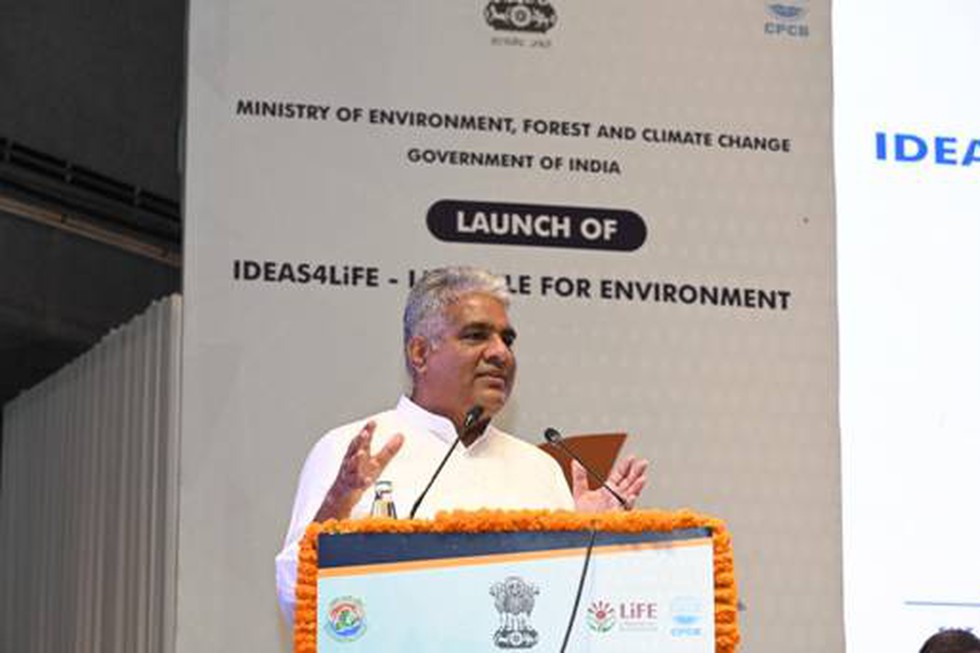
About Ideas4LiFE portal:
- It was launched for inviting ideas related to products and services, which induce behavioral changes related to environment-friendly lifestyles.
- It aims to encourage and motivate students, faculty and research scholars to contribute their innovative ideas to the global initiative of Mission LiFE.
- It is a remarkable opportunity for inspired minds to participate in a global movement dedicated to environmental sustainability.
Key facts about Mission LiFE
- Mission LiFE, or Lifestyle for Environment, is an India-led global mass movement to nudge individual and community action to protect and preserve the environment.
- It was launched at the 26th UN Climate Change Conference of the Parties (COP26) in Glasgow in November 2021.
- The program hopes to “mobilize one billion Indians as well as people in other countries to become individuals who practice sustainable lifestyles.
- It emboldens the spirit of the P3 model, i.e., Pro Planet People.
- It aims at following a three-pronged strategy for changing people's collective approach towards sustainability,
- nudging individuals to practice simple yet effective environment-friendly actions in their daily lives (demand)
- enabling industries and markets to respond swiftly to the changing demand (supply)
- to influence government and industrial policy to support both sustainable consumption and production (policy).
Prelims Pointers
July 31, 2024
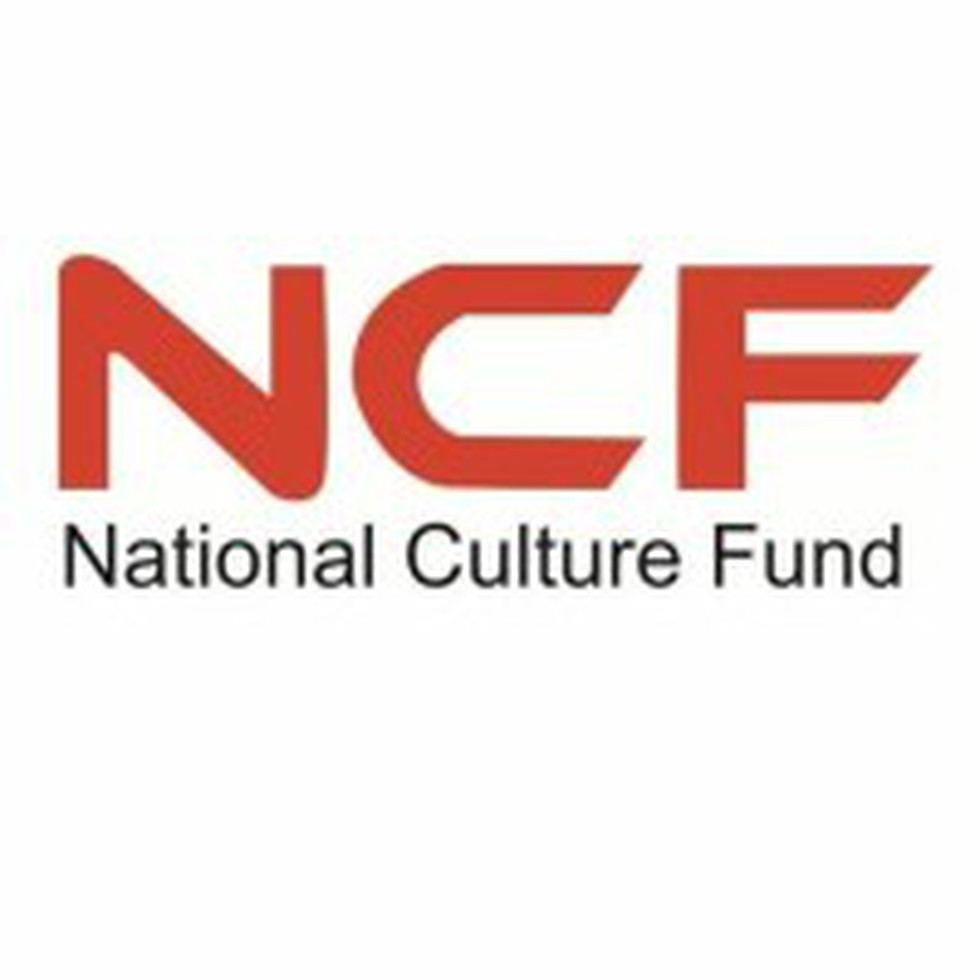
About National Culture Fund:
- It was set up as a Trust on 28th November, 1996 under the Charitable Endowment Act, 1890 with a view to mobilize extra resources through Public Private Partnerships (PPP) towards promoting, protecting and preserving India’s tangible & intangible cultural heritage
- Objectives of NCF
- To administer and apply the Fund for conservation, maintenance, promotion, protection, preservation and up-gradation of monuments protected or otherwise;
- To impart training and facilitate development of a cadre of specialists and cultural administrators
- To facilitate in providing additional space in existing museums & construct new museums to accommodate or create new & special galleries.
- Documentation of cultural expressions and forms that have lost their relevance in contemporary scenarios and are either fading out or facing extinction.
- Features
- It is managed and administered through a Governing Council chaired by the Hon’ble Minister of Culture and has a maximum strength of 25 members to decide the policies.
- An Executive Committee headed by Secretary (Culture) and has a maximum strength of 11 Members, to execute those policies.
- Donations to the National Culture Fund are eligible for 100% tax benefit under Section 80G (ii) of the Income Tax Act, 1961.
- NCF’s activities are covered under Schedule VII No. (v) of the Companies Act, 2013 as valid receptacle of Corporate Social Responsibility (CSR) contribution under: - Protection of national heritage, art and culture including restoration of buildings and sites of historical importance and works of art; setting up public libraries; promotion and development of traditional arts and handicrafts.”
- Annual Accounts are audited by the Comptroller and Auditor General of India.
- NCF can receive donations from Corporates, PSUs, Trusts and Individuals for maintenance and preservation of Centrally Projected monuments/ cultural projects through NCF. All donors/sponsors have the responsibility to comply with the terms & conditions of the MoU agreed for any particular project.
Prelims Pointers
July 31, 2024

About Advanced Land Navigation System:
- It is a Ring Laser Gyro (RLG) based navigation system.
- It is used for traversing a path defined by the coordinates of a military map in ESM format.
- The system provides Inertial, GPS and Hybrid Navigation data for the navigation requirements.
- The system is spoof-proof with high levels of encryption.
- It can be operated in three different modes
- Inertial Mode: In this, systems operate completely on the Inertial Sensor Inputs.
- Hybrid Mode: It takes the inputs from an inertial sensor as well as GPS receiver and selects the most accurate data for calculations of navigational parameters.
- GPS Mode: In this, the system is independent of inertial sensor inputs.
- ALNS Mk-II is compatible with Indian Regional Navigation Satellite System (IRNSS), NAVigation using Indian Constellation (NavlC), in addition to Global Positioning System (GPS) and Global Navigation Satellite System (GLONASS).
- The ALNS Mk-II offers compatibility with Defence Series Maps resulting in very high accuracy in navigational applications for AFVs.
- This equipment will be procured from Bharat Electronics Limited (BEL), Chennai under Buy [lndian-Indigenously Designed Developed and Manufactured (lDDM)] category.
Prelims Pointers
July 31, 2024
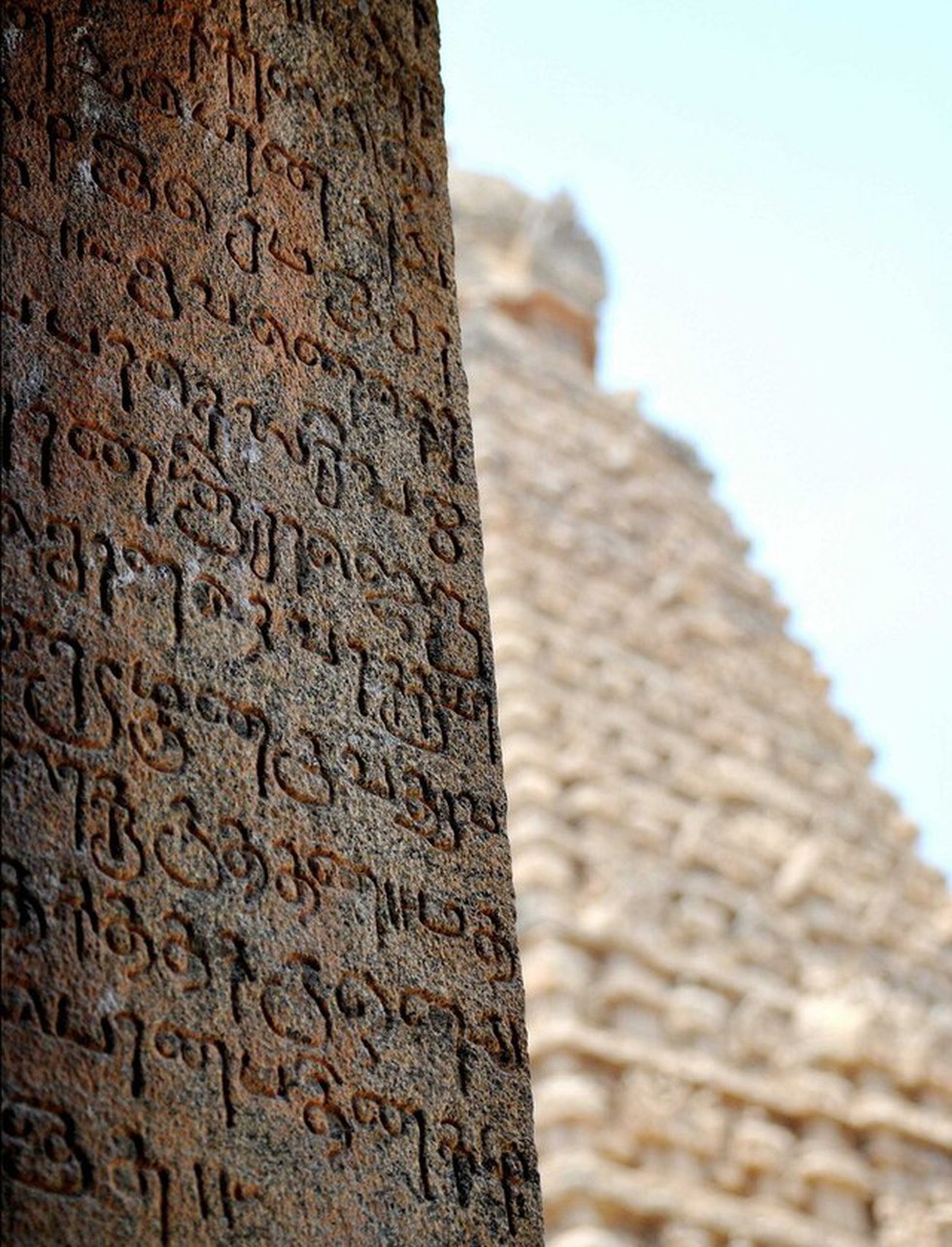
About Vattezhuthu:
- Vatteluttu, popularly known as Vattezhuthu, was a syllabic alphabet of south India (Tamil Nadu and Kerala) and Sri Lanka used for writing the Tamil and Malayalam languages.
- The name Vatteluttu is thought to mean either 'rounded script', 'northern script', or 'chiseled script'.
- It first appeared in stone inscriptions in southern India dating from the 4th century AD.
- It probably developed from the Tamil-Brahmi script; a variant of the Brahmi script used to write Old Tamil between from about the 3rd century BC until the 1st century AD.
- Vatteluttu was used to write Tamil and Malayalam in Tamil Nadu until the 9th century.
- In Kerala, Vatteluttu continued to be used until the 15th century. It changed over time to become theMalayalam script, with some letters borrowed from the Grantha script.
- Vatteluttu also developed into the Koleluttu script, which was used, especially by Christians and Muslims, in Kerala until the 19th century.
Prelims Pointers
July 31, 2024

About Liquidity Coverage Ratio (LCR):
- It refers to the proportion of highly liquid assets held by financial institutions to ensure that they maintain an ongoing ability to meet their short-term obligations (i.e., cash outflows for 30 days).
- 30 days was selected because, in a financial crisis, a response from governments and central banks would typically take around 30 days.
- It is intended to make sure that banks and financial institutions have a sufficient level of capital to ride out any short-term disruptions to liquidity.
- LCR in banking resulted from the Basel III agreement, which is a series of measures undertaken by the Basel Committee on Bank Supervision (BCBS).
- In India, RBI issued Basel III liquidity guidelines in 2012.
- RBI implemented LCR in January 2015, and as per a circular in 2020, banks should maintain sufficient HQLA at all times to meet unexpected withdrawals.
- Calculation:
- LCR = (High Quality Liquid Assets (HQLA)) / (Total net cash outflows over the next 30 calendar days)
- Every asset that can be easily and instantly converted into cash at minimum or no cost of value is a HQLA.
- These assets include cash, reserves with central banks, and central government bonds, which can easily be converted into cash.
- In India, all Statutory Liquidity Ratio (SLR) eligible assets, which need to be maintained by the banks as per the Banking Regulation Act, 1949, are permitted to be considered HQLA under LCR requirements if they are in excess. This helps maintain and optimise both liquidity requirements.
Prelims Pointers
July 31, 2024
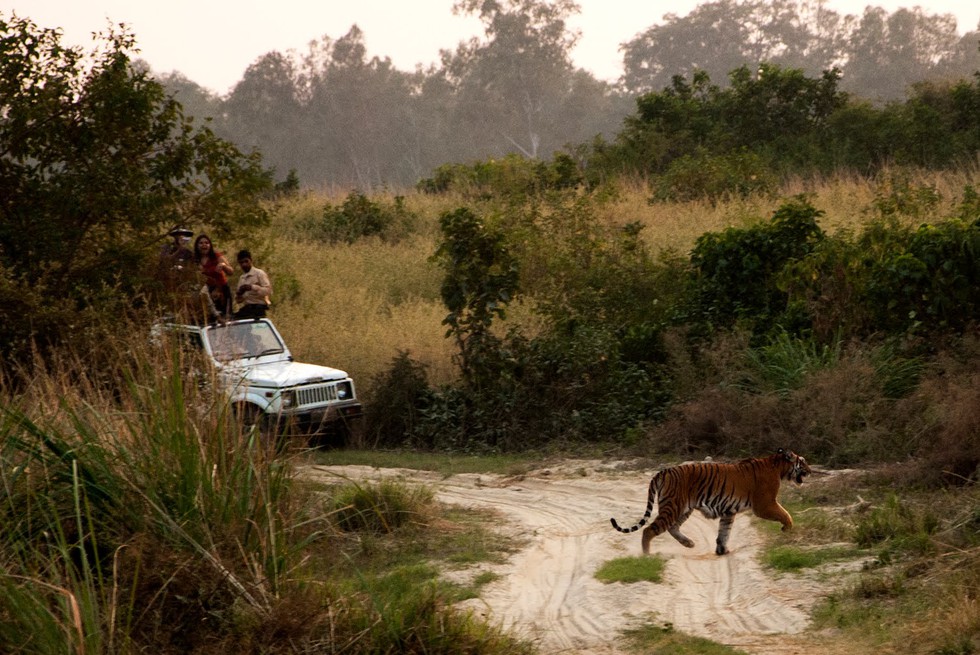
About Achanakmar Tiger Reserve:
- Location: It is situated in Bilaspur district of Chhattisgarh.
- Achanakmar Wildlife Sanctuary was established in 1975 and was declared a tiger reserve in 2009.
- It covers an area of 553.286 sq. km.
- It is part of the huge Achanakmar-Amarkantak Biosphere Reserve.
- It has a corridor connecting Kanha and Bandhavgarh Tiger Reserve and plays a critical role in the dispersal of tigers among these reserves.
- River: The Maniyari River flows right from the centre of this reserve, which is the forest's lifeline.
- Tribe:
- It is home to the Baigas, a forest-dwelling tribal community classified as a “Particularly Vulnerable Tribal Group (PVTG)”.
- In 626 hectares of the core area of the reserve, there are 25 forest villages, with approximately 75 percent of the population belonging to the Baiga tribe and the remaining consisting of the Gond and Yadav communities.
- Vegetation: Tropical moist deciduous vegetation covers the majority of the area.
- Flora: Sal, bija, saja, haldu, teak, tinsa, dhawara, lendia, khamar, and bamboo bloom here, along with over 600 species of medicinal plants.
- Fauna: It includes the tiger, leopard, bison, flying squirrel, Indian giant squirrel, chinkara, wild dog, hyena, sambar, chital, and over 150 species of birds.
Prelims Pointers
July 31, 2024
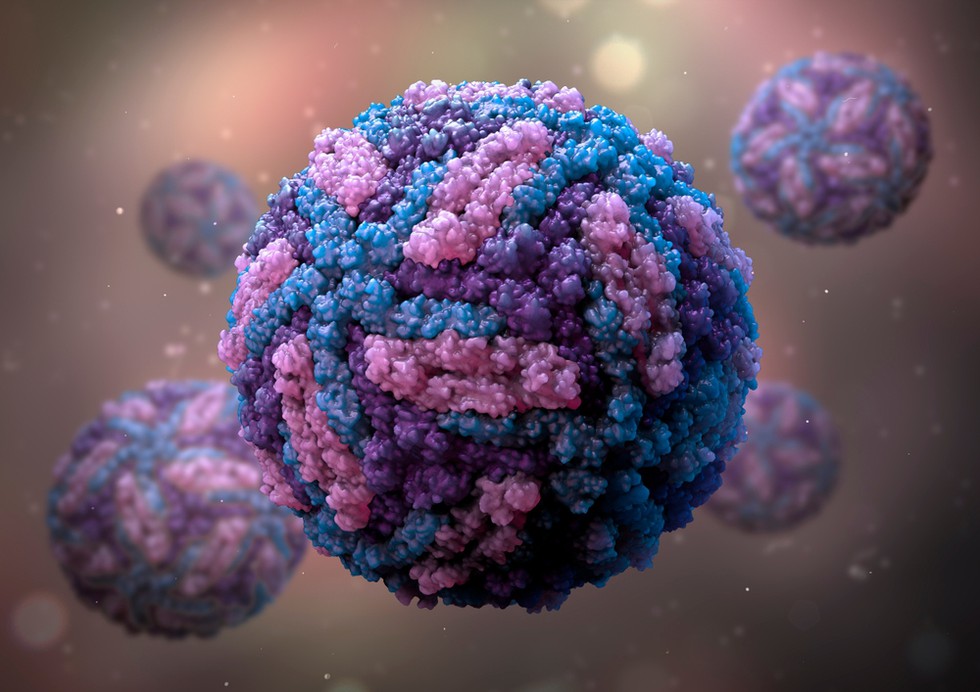
About Zika virus:
- It is a mosquito-borne virus, similar to dengue fever, yellow fever, and West Nile virus.
- It is a single-strand ribonucleic acid (RNA) virus.
- It was named after the Zika Forest in Uganda, where it had been discovered for the first time in 1947, and the first human case of Zika was reported in 1952.
- It typically occurs in tropical and subtropical areas of Africa, the Americas, Southern Asia, and the Western Pacific.
- Transmission:
- It is most commonly spread to people by the bite of an infected Aedes species mosquito.
- It can also spread through sexual contact, blood transfusion, and from an infected mother to her baby during pregnancy or childbirth.
- Symptoms and Complications:
- Many people infected with Zika will not have symptoms or will only have mild symptoms.
- The most common symptoms are fever, rash, headache, joint and muscle pain, and red eyes.
- Infection during pregnancy can cause certain birth defects, such as microcephaly, as well as other neurological disorders in the baby.
- It has also been linked to Guillain-Barré syndrome, a rare autoimmune disorder that can lead to muscle weakness and paralysis.
- Treatment: There is currently no vaccine to prevent or medicine to treat Zika.
Prelims Pointers
July 31, 2024

About Golan Heights:
- It is a rocky plateau in south-western Syria, about 60 km (40 miles) south-west of Damascus (the capital of Syria).
- It's considered occupied territory under international law and UN Security Council resolutions.
- It covers an area of 1,000 sq km.
- It is bounded by the Jordan River and the Sea of Galilee on the west, Mount Hermon on the north, the seasonalWadi Al-Ruqqad River on the east, and the Yarmuk River on the south.
- History:
- Israel seized the Golan Heights from Syria in the closing stages of the 1967 Six-Day War.
- Most of the Syrian Arab inhabitants fled the area during the conflict.
- An armistice line was established, and the region came under Israeli military control. Almost immediately, Israel began to settle the Golan.
- Syria tried to retake the Golan Heights during the 1973 Middle East war, but the attempt was thwarted.
- Both countries signed an armistice in 1974, and a UN observer force has been in place on the ceasefire line since 1974.
- Israel unilaterally annexed the Golan Heights in 1981. The move was not recognised internationally.
- About 20,000 Jewish settlers live on the Golan Heights, which is also home to Israeli military bases and listening posts.
- The settlements are considered illegal under international law, though Israel disputes this.
- The settlers live alongside some 20,000 Syrians, most of them Druze Arabs, who did not flee when the Golan was captured.
- Strategic Importance:
-
- The Syrian capital, Damascus, can be clearly seen from the top of the Golan Hills.
- It overlooks northern Israel’s Galilee region and the Sea of Galilee and dominates the route to Damascus on the Syrian-controlled side.
- Importantly, the Golan Heights shares a border with Jordan and Lebanon.
- The area is also a key source of water for an arid region. Rainwater from the Golan's catchment feeds into the Jordan River.
July 30, 2024
Prelims Pointers
July 30, 2024
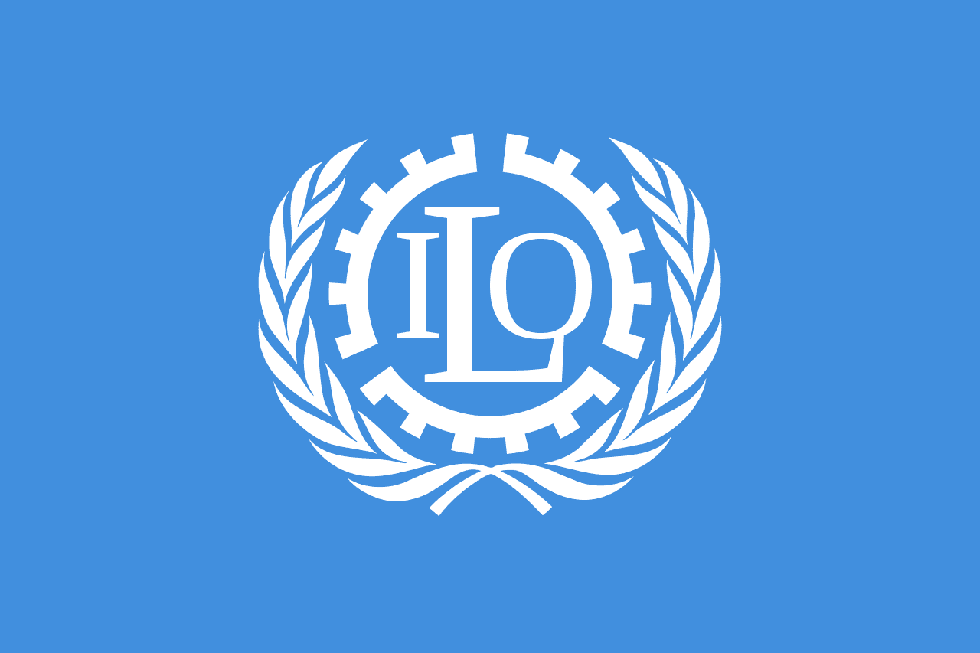
About International Labour Organization (ILO):
- It is a specialized agency of the United Nations (UN) dedicated to improving labour conditions and living standards throughout the world.
- History:
- It was created in 1919, as part of the Treaty of Versailles that ended World War I, to reflect the belief that universal and lasting peace can be accomplished only if it is based on social justice.
- In 1946, the ILO became a specialized agency of the newly formed UN.
- HQ: Geneva,
- It is also a member of the United Nations Development Group (UNDP), a coalition of UN organization aimed at helping meet the Sustainable Development Goals.
- Members: The ILO has 187 member states: 186 out of 193 UN member states plus the Cook Islands.
- Structure: It is the only tripartite U.N. agency that brings together governments, employers and workers’ representatives of 187-member States.
- It serves its tripartite constituents and society as a whole in a variety of ways, including:
- Formulation of international policies and programmes to promote basic human rights, improve working and living conditions, and enhance employment opportunities
- Creation of international labour standards backed by a unique system to supervise their application
- An extensive programme of international technical cooperation formulated and implemented in an active partnership with constituents, to help countries put these policies into practice in an effective manner
- Training, education, and research activities to help advance all of these efforts
- In recognition of its activities, the ILO was awarded the Nobel Prize for Peace in 1969.
Prelims Pointers
July 30, 2024

About Wagner Group:
- It is officially called PMC Wagner, is a Russian paramilitary organization.
- It is basically a private military company and a network of mercenaries.
- Origin: It first emerged in 2014 during Russia’s annexation of Crimea and has since operated in Syria and at least a half dozen African countries, including Libya, Sudan, Mozambique, Mali, and the Central African Republic.
- It was founded by Yevgeny Prigozhin and Dmitry Utkin, a former special forces officer in Russia's GRU military intelligence.
- Although mercenary forces are technically illegal in Russia, Wagner registered as a "private military company" in 2022.
- Symbol: It is composed of a solid black roundel with a white image of a human skull in the scope, symbolizing victory over death.
- Its operations have been closely tied to the Russian military and intelligence community.
- Wagner’s services vary based on the needs of its clients, which include rebel groups and regimes, and its funding ranges from direct payment to resource concessions.
- The military units of PMC Wagner numbered varied at different times and according to various sources from 1,350 to 100,000 people.
Prelims Pointers
July 30, 2024
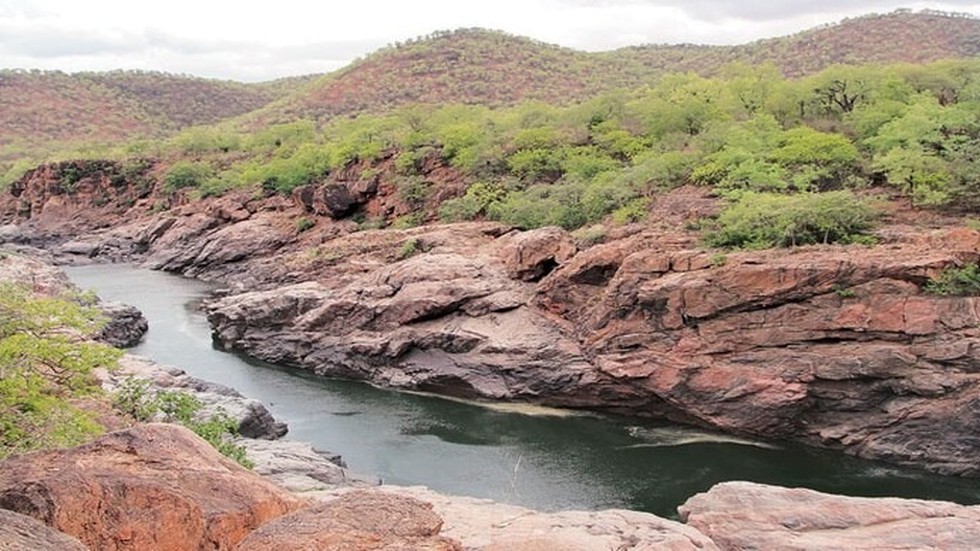
About Mekedatu Project:
- It is a multi-purpose (drinking water and power) project proposed by Karnataka, which involves building a balancing reservoir near Kanakapura in Ramanagara district, Karnataka.
- It is about 90 km away from Bengaluru and 4 km ahead of the border with Tamil Nadu.
- The project is proposed at the confluence of the Cauvery River with its tributary Arkavathi.
- The plan involves building a 99-metre-high, 735-metre-long concrete gravity dam, an underground powerhouse, and a water conductor system.
- The expected capacity of the dam is 66,000 TMC (thousand million cubic feet) of water
- Once completed, it is expected to supply over 4 TMC of water to Bengaluru city for drinking purposes.
- The estimated cost of completing the project is around Rs 14,000 crores, covering an area of over 5,000 hectares.
- Issue:
- Tamil Nadu, the lower riparian state has claimed that the project is against the interest of the state’s water requirement.
- Tamil Nadu says, Mekedatu area represents the last free point in Karnataka from where Cauvery water flows unrestricted into Tamil Nadu, and Mekedatu dam project is an attempt by Karnataka to lock this free flow of water.
- The lower riparian state has to give its no-objection for any project that comes up on the Cauvery as per the Cauvery tribunal and Supreme Court order.
Prelims Pointers
July 30, 2024
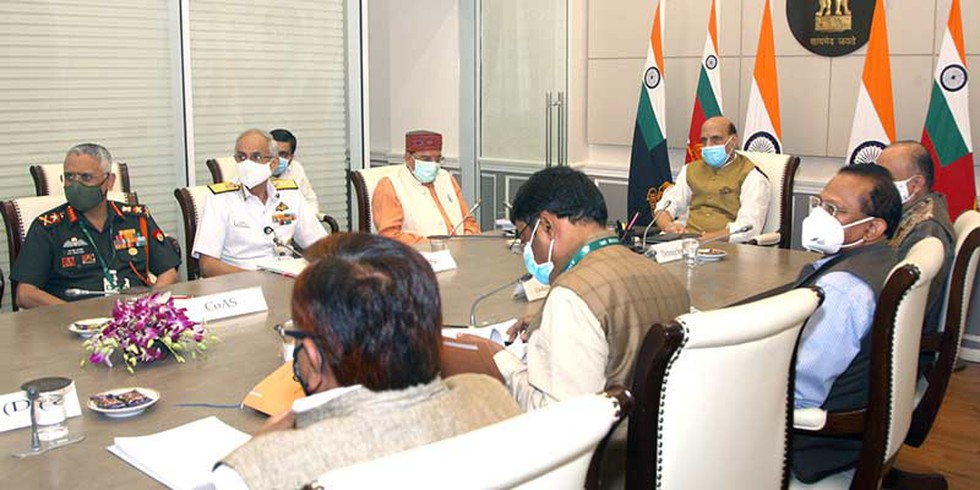
About Defence Acquisition Council (DAC):
- It is the highest decision-making body of the defence ministry on procurement.
- The main objective of the DAC is to ensure expeditious procurement of the approved requirements of the armed forces in terms of capabilities sought and time frame prescribed by optimally utilizing the allocated budgetary resources.
- Formation: It was formed after the Group of Minister's recommendations on 'Reforming the National Security System', in 2001, post-Kargil War (1999).
- Composition:
- The defence minister is the chairman of DAC.
- Its members include the Chief of Defence Staff (CDS) and chiefs of the Army, Navy, and Air Force.
- Its functions include:
- Give in principle approval of a 15 years Long Term Integrated Perspective Plan (LTIPP) for defence forces.
- Accord of acceptance of necessity to acquisition proposals.
- Categorisation of the acquisition proposals relating to ‘Buy’, ‘Buy & Make’, and ‘Make’.
- Look into issues relating to single vendor clearance.
- Take decisions regarding ‘offset’ provisions in respect of acquisition proposals above Rs 300 crore.
- Take decisions regarding the Transfer of Technology under the ‘Buy & Make’ category of acquisition proposals.
- Field trial evaluation.
Prelims Pointers
July 30, 2024

About Alderman:
- It is a term that originated from the combination of "old" and "man," indicating an older or experienced person.
- Initially, it referred to elders of a clan or tribe but later evolved to denote the king's viceroys, regardless of age.
- Eventually, it took on a more specific meaning as the "chief magistrate of a county" with both civil and military responsibilities.
- By the 12th century CE, it began to be associated with municipal governments and used to describe officers of municipal bodies. This usage of the term continues to the present day.
- Alderman in India:
- In India, a General Body of a Municipality or Municipal Corporation is composed of elected representatives called Councillors.
- Councillors can nominate experts in their disciplines of the city to become members of this body. These nominated members are called ‘Aldermen’.
- They cannot, however, cast votes in the mayoral election.
- As ward committee members, they have the right to assist the house in taking decisions of public importance.
- Case of Delhi:
- As per the Delhi Municipal Corporation Act of 1957, the Lieutenant Governor of the National Capital Territory of Delhi has the authority to nominate ten individuals who are above the age of 25 to the corporation.
- These individuals are believed to have specialised expertise or experience in municipal administration.
Prelims Pointers
July 30, 2024

About Saffron Crop:
- It is one of the costliest herbal spice across the globe and popularly known as Red Gold or the Golden Condiment.
- The commercial part of Saffron is Stigma, which is the female part of flower also termed as Saffron filament or Saffron thread or Saffron stigmata.
- The seeds of Saffron are called corms or bulbs, and Saffron plant regenerates from the vegetative multiplication of its underground corms.
- It contains crocin, picrocrocin and saffranal which are very important constituents for both medicinal and aesthetic purposes.
- Distribution: The saffron plant is native to Greece and Asia Minor, but it is now cultivated in many parts of Europe (especially Italy, France, and Spain), China, and India.
- In India around 90% of saffron production comes from Kashmir, where it has been grown for centuries.
- Required Climatic conditions
- It grows at an elevation of 1,500-2,000 m above mean sea level.
- Saffron cultivation requires explicit climatic conditions with temperatures ranging from not more than 35oC or 40oC in the summer to about -15oC or -20oC in the winter.
- It can be grown in dry, moderate and continental climate types.
- Soil: It thrives on loamy, sandy, and calcareous soils.
- Saffron grows best on acidic soil. It thrives well when the soil pH is 5.5 to 8.5
Prelims Pointers
July 30, 2024

About Oropouche fever:
- It is an emerging zoonotic arboviral diseasecaused by the Oropouche Virus (OROV).
- It was first discovered in Trinidad and Tobago in 1955.
- Transmission
- It is spread to humans through the bite of an infected midge (often through the bite of the Culicoides paraensis midge) or mosquito.
- Factors such as urbanization, deforestation, and climate change contribute to the proliferation of its vector, escalating the risk of transmission.
- There is no evidence of human-to-human transmission of the disease — to date.
- Symptoms
-
- Symptoms of the disease are similar to dengue and typically start between four and eight days after the bite.
- The onset is sudden, and symptoms usually include fever, headaches, pain, chills, joint stiffness and sometimes nausea and vomiting.
- Treatment
- There are no vaccines and specific treatment for Oropouche fever.
- Medical care aims to control the symptoms and help with recovery.
Prelims Pointers
July 30, 2024
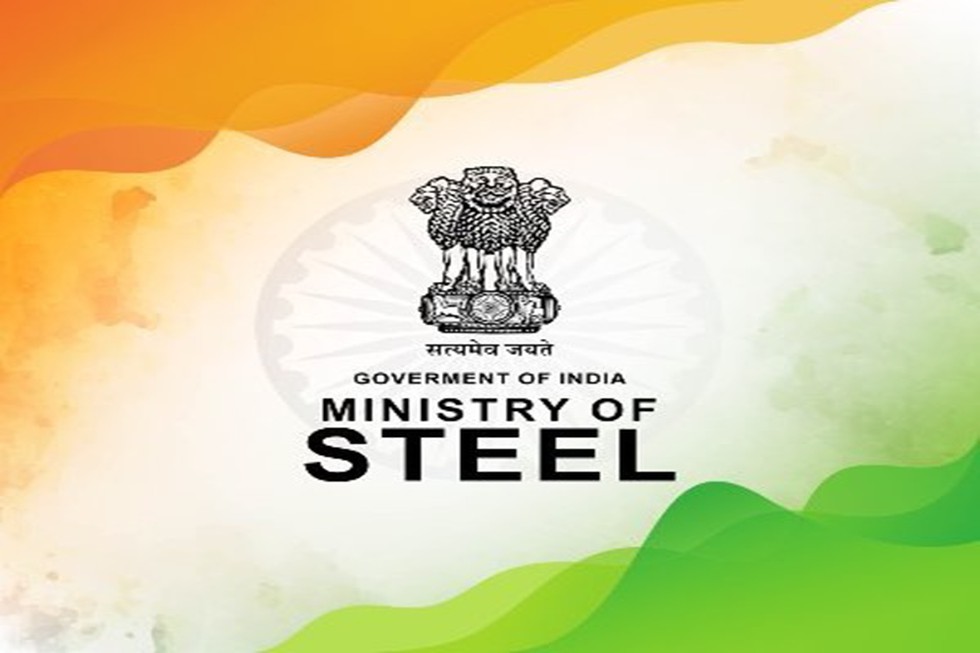
About National Metallurgist Awards:
- It was instituted in 1962 by the then Ministry of Steel & Mines to recognise & honour the outstanding contributions of Metallurgists in the metallurgical field covering operation, research, design, education, waste management and energy conservation. The awards are given in annual basis
- These awards are conferred to recognize outstanding contributions in the metallurgical field, covering Operations, Research & Development, Waste Management and Energy Conservation.
- Nominations for the award shall be invited online on the Ministry of Steel’s Portal or the centralized portal being developed by the Ministry of Home Affairs. Nominations will be through companies/ organizations or from the public through self-nomination.
- The awards are given on an annual basis, only to Indian nationals.
- The Awards will be given in the following four categories:-
- Lifetime Achievement Award
- National Metallurgist Award
- Young Metallurgist Award (Environment and Metal Science)
- Award for R&D in Iron & Steel Sector.
- The first award was given in 1963 and subsequently every year thereafter.
Prelims Pointers
July 30, 2024
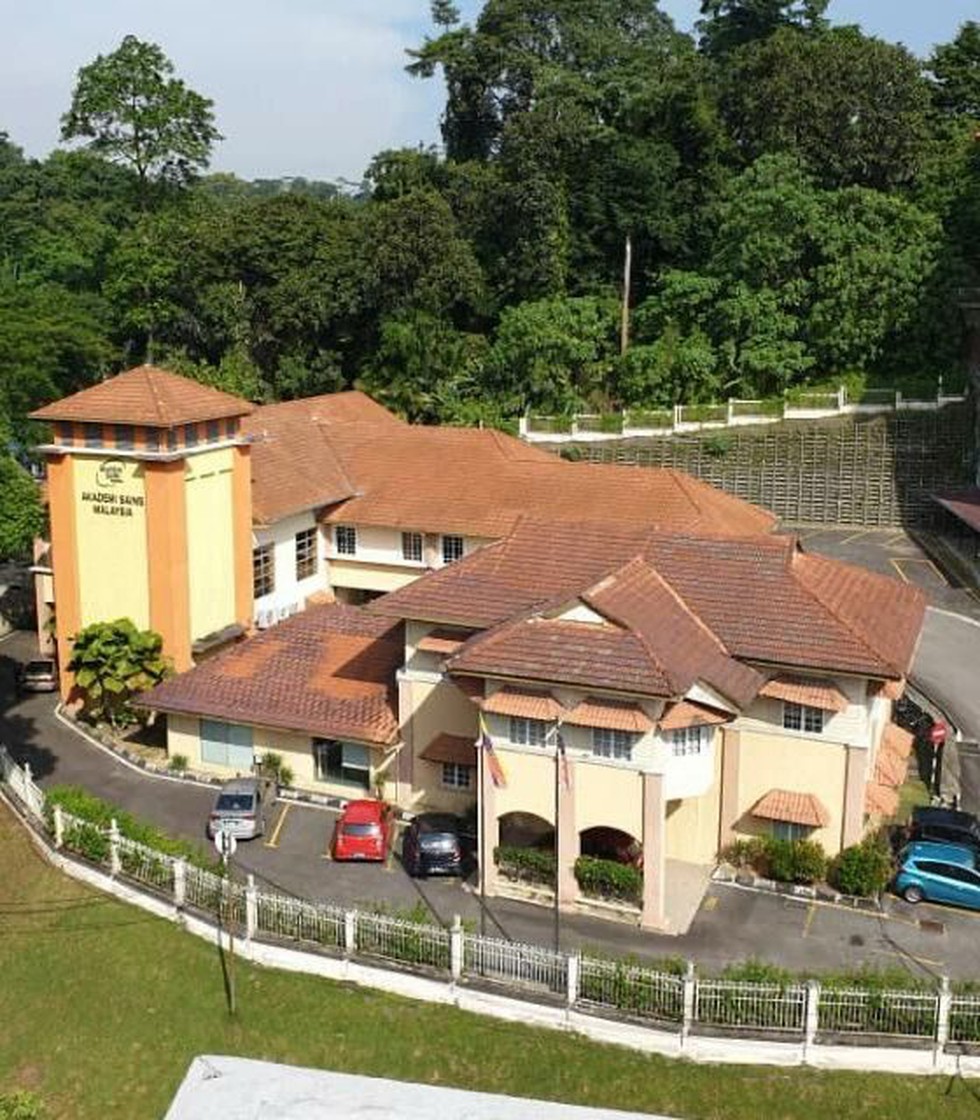
About ISTIC-UNESCO:
- The International Science, Technology and Innovation Centre for South-South Cooperation under the Auspices of UNESCO (ISTIC) which is a UNESCO Category 2 Centre.
- The Malaysian Government has hosted this since 2008.
- The Centre acts as an international platform offering sustainable programmes and services and augmenting sustainable development for South-South Cooperation.
- The Centre’s hosting is based on a six-year Agreement between the Malaysian Government represented by the Ministry of Science, Technology and Innovation (MOSTI) and UNESCO.
- Its current Agreement is from February 2022 until January 2028.
- The Mission of the organization is to be “A leading international platform offering sustainable programmes and services in producing holistic talents towards institutional excellence and augmenting sustainable development for South-South Cooperation.
- It aimed to support the exchange of students, researchers, scientists, and technologists among developing countries.
What is UNESCO Category 2 Centre?
- These institutes and centres under the auspices of UNESCO are a global network of institutions of excellence in the Organization’s domains of competence.
- These centres are a privileged partner of the Organization with access to UNESCO’s logo and international and intergovernmental bodies and networks and may leverage on UNESCO’s international reach and convening powers.
- Category 2 institutes and centres under the auspices of UNESCO are an integral part of the Organization’s Comprehensive Partnership Strategy.
Prelims Pointers
July 30, 2024
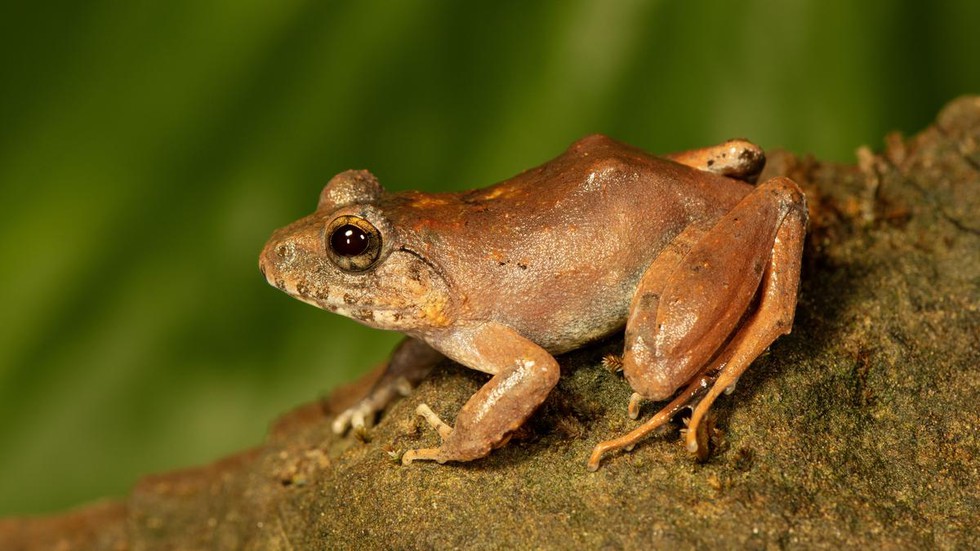
About Charles Darwin’s frog:
- This frog species is endemic to the Andaman Islands.
- It belongs to the family Dicroglossidae, a large group of Asian frogs with over 220 species.
- It is found both male and female Charles Darwins adopting an inverted position on the walls of tree cavities, keeping their bodies completely above the water while mating as well as laying eggs.
- Behaviour: Charles Darwin males produced three types of ‘complex’ calls to woo females.
- When the ‘aggressive’ calls fail to ward off competing males, they begin fighting—kicking and boxing, using forelimbs and hind limbs, and biting off body parts or even the entire head.
- Conservation status
- IUCN: Vulnerable
- Concern: The study revealed that these frogs increasingly use artificial objects as breeding sites, such as plastic seedling bags and human trash comprising discarded plastic, glass, and metal containers.
- This shift is likely a response to the loss and fragmentation of forest habitats, forcing the frogs to adapt to the rapidly changing environment on these small islands,”
July 29, 2024
Prelims Pointers
July 29, 2024
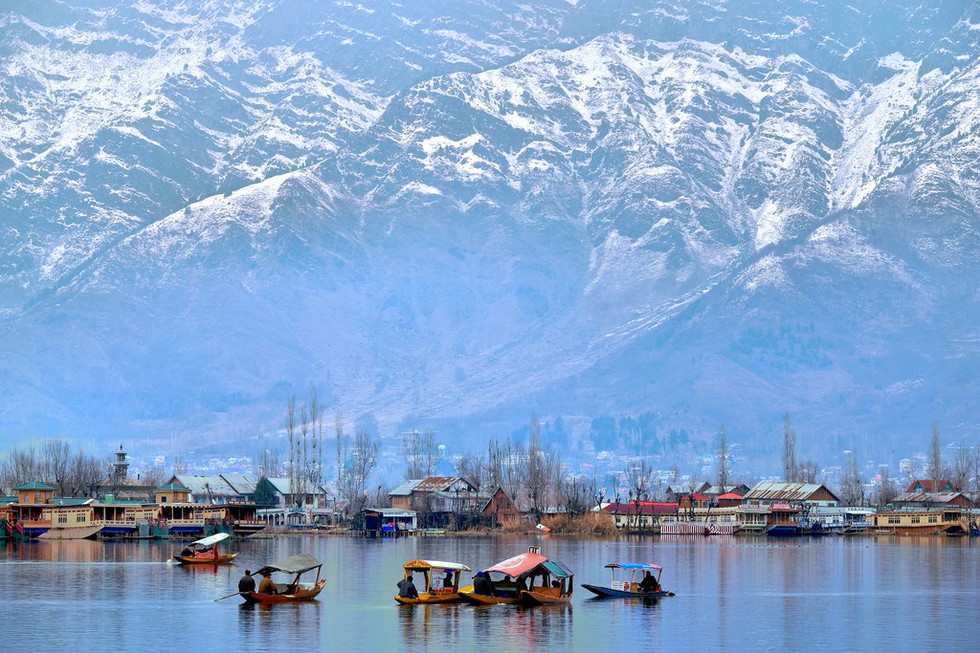
About Dal Lake:
- It is a popular lake situated in Srinagar, Jammu and Kashmir.
- It is surrounded by the Pir Panjal mountains.
- It is named the “Jewel in the crown of Kashmir” or “Srinagar’s Jewel”.
- It is the second-largest lake in Jammu and Kashmir.
- The lake covers an area of 18 square kilometres (6.9 sq mi) and is part of a natural wetland which covers 21.1 square kilometres (8.1 sq mi), including its floating gardens.
- The floating gardens, known as “Raad” in Kashmiri, blossom with lotus flowers during July and August.
- The wetland is divided by causeways into four basins: Gagribal, Lokut Dal, Bod Dal, and Nagin(although Nagin is also considered an independent lake).
- The shoreline of the lake, is about 15.5 kilometres (9.6 mi), is encompassed by a boulevard lined with Mughal era gardens, parks, houseboats, and hotels.
- Dal Lake is also popular for the floating market where vendors have their own Shikaras/wooden boats and approach tourists.
- The depth of water varies from 6 metres at its deepest to 2.5 metres at its shallowest.
- During the winter season, the temperature sometimes reaches −11 °C (12 °F), freezing the lake.
- Islands:
- Dal Lake includes 3 islands, 2 of which are marked with beautiful Chinar trees.
- The island located on the Lakut Dal is known as Roph Lank (Silver Island), is marked with the presence of majestic Chinar trees at the four corners, thus known as Char-Chinari (Four Chinars).
- The second Chinar Island, known as Sone Lank (Gold Island), is located on the Bod Dal (Big Dal) and overlooks the holy shrine of Hazratbal.
Prelims Pointers
July 29, 2024
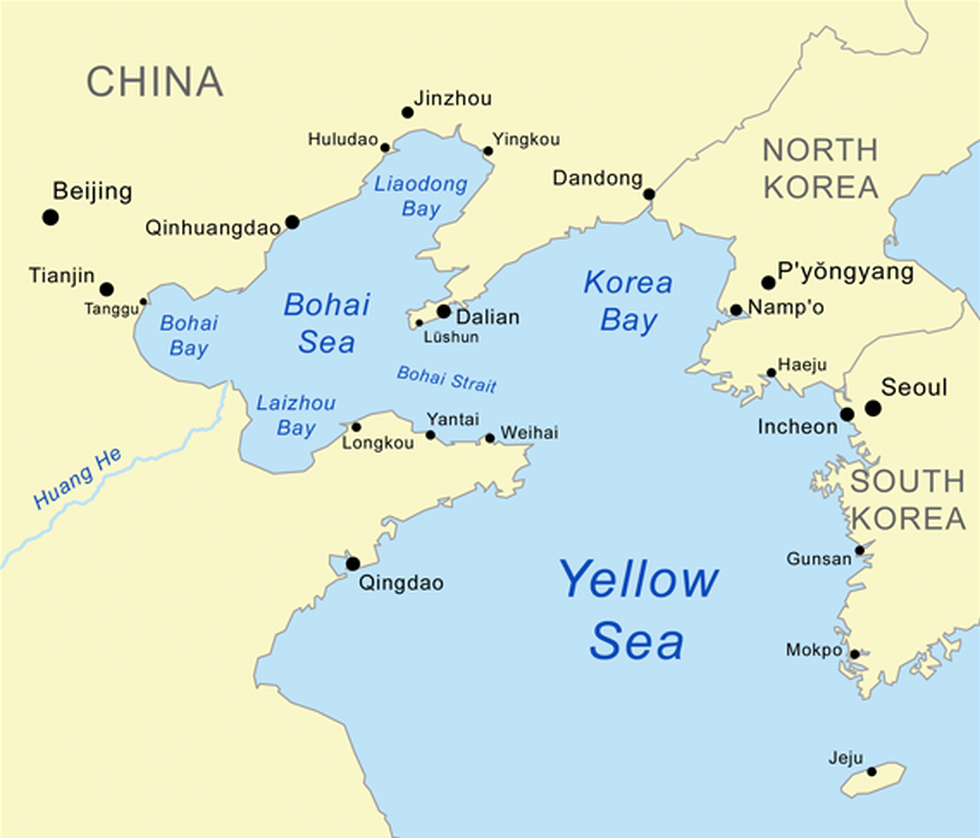
About Bohai Gulf:
- It is the innermost gulf of the Yellow Seaon the coast of Northeastern and North China.
- It is sometimes called Bohai Sea, or Bo Hai for short; in earlier times it was called the Gulf of Chili or the Gulf of Pechili.
- It is approximately 78,000 sq.km in area, and its proximity to Beijing, the capital of China, makes it one of the busiest seaways in the world.
- The Bohai Gulf is enclosed by the Liaodong Peninsula(northeast) and the Shandong Peninsula (south).
- Among the most important cities on the Bohai Gulf are Dalian and Tianjin; its shores form three of the most famous bays in the country: Liaodong Bay, Bohai Bay, and Laizhou Bay.
- The Yellow River, China’s second longest river, discharges into the gulf.
- There are both onshore and offshore petroleum deposits, and several oil refineries are located there as well as other industries.
Key Facts about Yellow Sea:
- It is a marginal sea of the western Pacific Ocean.
- Location:
- It is situated between mainland China to the west and north, the Korean Peninsula to the east, and the Shandong Peninsula and Liaodong Peninsula to the south.
- It connects with the Bohai Sea to the northwest.
- Size: Also referred to in China as Huang Hai and in North and South Korea as the West Sea, the Yellow Sea is 870 kilometres long and 556 kilometres wide.
- Depth: It is one of the largest shallow areas of continental shelf in the world, with an average depth of 44 metres and a maximum depth of 152 metres.
- Inflow: Several major rivers, including the Yellow River and the Yangtze River, discharge into the Yellow Sea.
- Islands: The Yellow Sea is dotted with numerous islands, the largest of which include Jeju Island (South Korea),the Shandong Peninsula islands (China), and Ganghwa Island (South Korea).
- Climate: The climate is characterized by very cold, dry winters and wet, warm summers.
- Currents:
- The warm current of the Yellow Sea is a part of the Tsushima Current, which diverges near the western part of the Japanese island of Kyushu and flows at less than 0.5 mile (0.8 km) per hour northward into the middle of the sea.
- Along the continental coasts, southward-flowing currents prevail, which strengthen markedly in the winter monsoon period, when the water is cold, turbid, and of low salinity.
Prelims Pointers
July 29, 2024

About Pollution Under Control (PUC) Certificate:
- The PUC Certificate, often referred to as the pollution certificate, is a mandatory document for every vehicle owner in India.
- This certificate states that you can legally ride/drive a vehicle in India with respect to meeting environmental standards.
- It is a validation document that states that the vehicle’s emission levels are within the permissible levels set by the government.
- All vehicles on Indian roads are required to possess a valid PUC certificate under the Central Motor Vehicles Rule 1989.
- Usually, a new vehicle is exempt from PUC in the first year. Following this, the vehicle has to undergo mandatory PUC tests at regular intervals to get a validity certificate.
- A PUC certificate is usually valid for a year from the date of issue.
- Failure to produce a PUC certificate can invite a fine of up to Rs 10,000 or six months of imprisonment or both under the Motor Vehicle Act.
- The vehicle owner may also be disqualified from holding their licence for three months.
- If the vehicle is found to be emitting fumes beyond the prescribed limit, despite possessing a valid PUC certificate, the certificate will be cancelled. The vehicle owner will have to obtain a new PUC certificate within seven days.
- The PUC certificate rule is applicable to CNG-powered vehicles in addition to petrol and diesel vehicles.
- How to get a PUC certificate?
- A PUC certificate can be obtained from a government-authorised emission test centre with a computerised facility.
- The issuance of an emission test certificate involves a thorough examination of the vehicle’s exhaust gas, and the test results are mentioned in the PUC certificate.
Prelims Pointers
July 29, 2024

About INS Tabar:
- It is a stealth frigate built for the Indian Navy in Russia.
- It is the third of the Talwar-class frigateof the Indian Navy.
- The frigate was commissioned on 19 April 2004 in Kaliningrad, Russia.
- INS Tabar has the ability to handle air/surface/subsurface missions or defending herself, operating either independently on maritime missions or supporting a larger naval task force.
- The ship is part of the Indian Navy’s Western Fleet, which is based in Mumbai under the Western Naval Command.
- Features:
- Fully loaded, INS Tabar has a displacement of 4,035 tons.
- Speed: 30 knots (56 km/h; 35 mph)
- Maximum range is 4,850 nautical miles (8,980 km; 5,580 mi) at 14 knots (26 km/h; 16 mph), while at 30 knots (56 km/h; 35 mph), the range lessens to 1,600 nautical miles (3,000 km; 1,800 mi).
- It is equipped with a versatile range of weapons and sensors.
- It is the first vessel in the Talwar class frigate to be armed with supersonic BrahMos (anti-ship cruise missiles).
- It is also equipped with Barak-1 missiles.
Prelims Pointers
July 29, 2024

About National Policy for Rare Disease (NPRD):
- The Ministry of Health and Family Welfare, Government of India, has launched the National Policy for Rare Diseases (NPRD) in March 2021, for the management of patients having rare diseases, which is directed towards prevention, early detection, and treatment of such diseases.
- The policy has provision of free treatment facilities for persons suffering with such diseases at designated ‘Centres of Excellence’.
- The salient features of NPRD 2021 are as under:
- The rare diseases have been identified and categorized into 3 groups:
- Group 1: Disorders amenable to one-time curative treatment.
- Group-2: Diseases requiring long term/lifelong treatment having relatively lower cost of treatment and benefit have been documented in literature, and annual or more frequent surveillance is required.
- Group 3: Diseases for which definitive treatment is available but challenges are to make optimal patient selection for benefit, very high cost, and lifelong therapy.
- Centres of Excellences (CoEs) have been identified for the diagnosis, prevention, and treatment of rare diseases.
- These COEs will be provided a one-time grant subject to a maximum of Rs 5 crore each for infrastructure development for screening, tests, and treatment, if such infrastructure is not available.
- Provision for financial support of up to Rs. 50 lakhs to the patients suffering from any category of the Rare Diseases and for treatment in any of the CoE mentioned in NPRD-2021, outside the Umbrella Scheme of Rashtriya Arogaya Nidhi (RAN).
- RAN provides a one-time financial assistance to poor patients living below State/UT wise threshold poverty line suffering from rare diseases (RD) listed under group 1 for treatment at Government hospitals/institutes having Super Specialty facilities; (Maximum financial assistance is Rs. 20 lakhs).
- In order to receive financial assistance for treatment of a rare disease, the patient of the nearby area may approach the nearest CoE to get him assessed and avail the benefits.
- Treatment of patients starts immediately after registration with the CoEs.
- Nidan Kendras have been set up for genetic testing and counselling services.
- It has provisions for promotion of research and development for diagnosis and treatment of rare diseases; promotion of local development and manufacture of drugs and creation of a conducive environment for indigenous manufacturing of drugs for rare diseases at affordable prices.
- The rare diseases have been identified and categorized into 3 groups:
Prelims Pointers
July 29, 2024
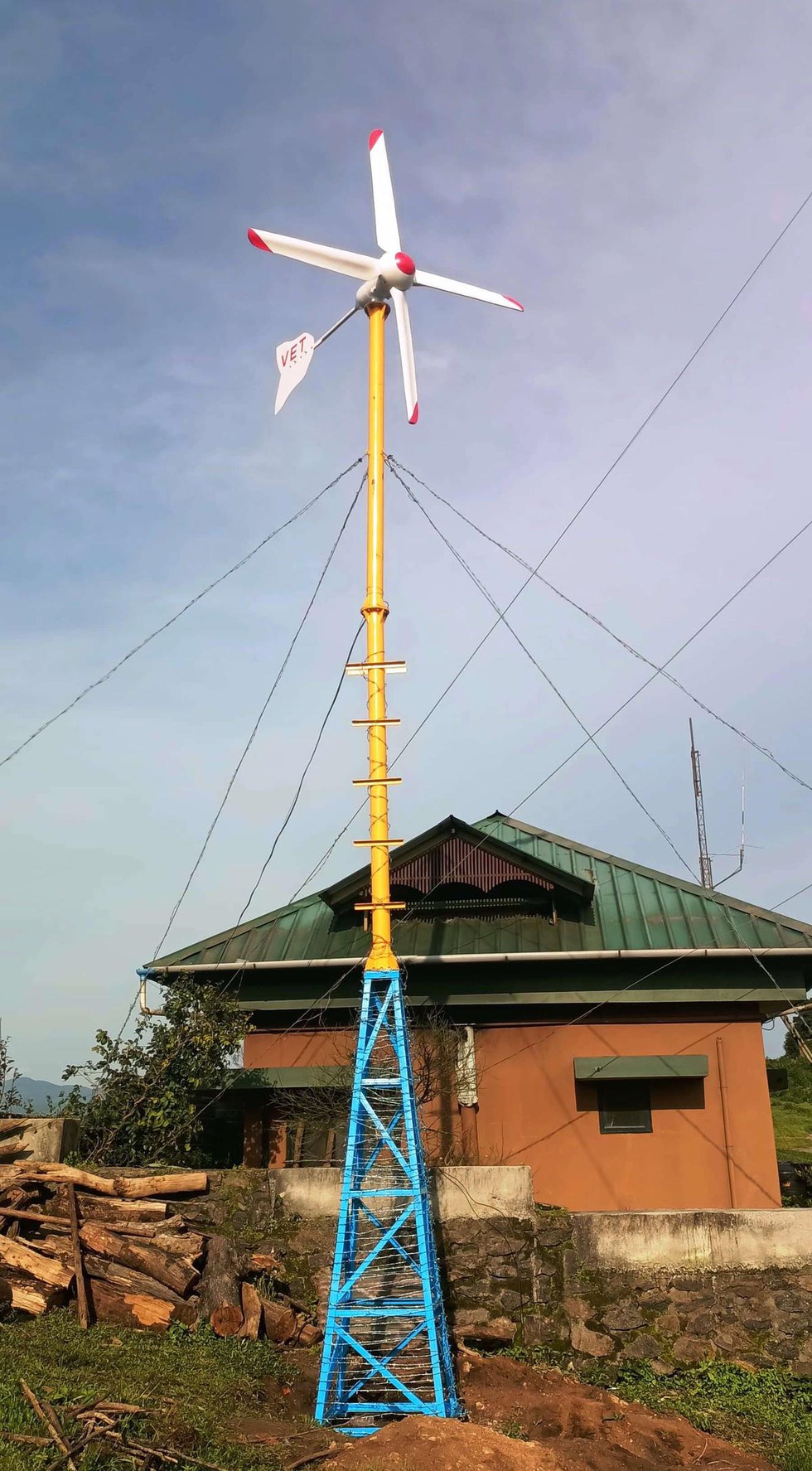
About Periyar Tiger Reserve:
- It is located in the Western Ghats of Kerala.
- It gets its name from the River Periyar which has its origin deep inside the reserve.
- Rivers: Two main rivers which drains the reserve are Pamba and Periyar drain the reserve.
- It is home to many tribal communities including the Mannans and the Palians.
- Vegetation: It consists of tropical evergreen, semi- evergreen and moist deciduous forest.
- Flora:: Important flora includes teak, mangoes, rosewood, jamun, jacarandas, terminalias, tamarind, royal ponciana, bamboo etc.
- Fauna: It includes Elephants, Wild Pigs, Sambar, Gaur, Mouse Deer, Dole or Barking Deer, Indian Wild Dog and Tiger.
- The major four species of primates are also found at Periyar - the rare lion-tailed macaque, the Nilgiri Langur, Gee's Golden Langur, Common Langur and Bonnet Macaque.
- It is also being considered as the habitat of the elusive Nilgiri Tahr.
Prelims Pointers
July 29, 2024
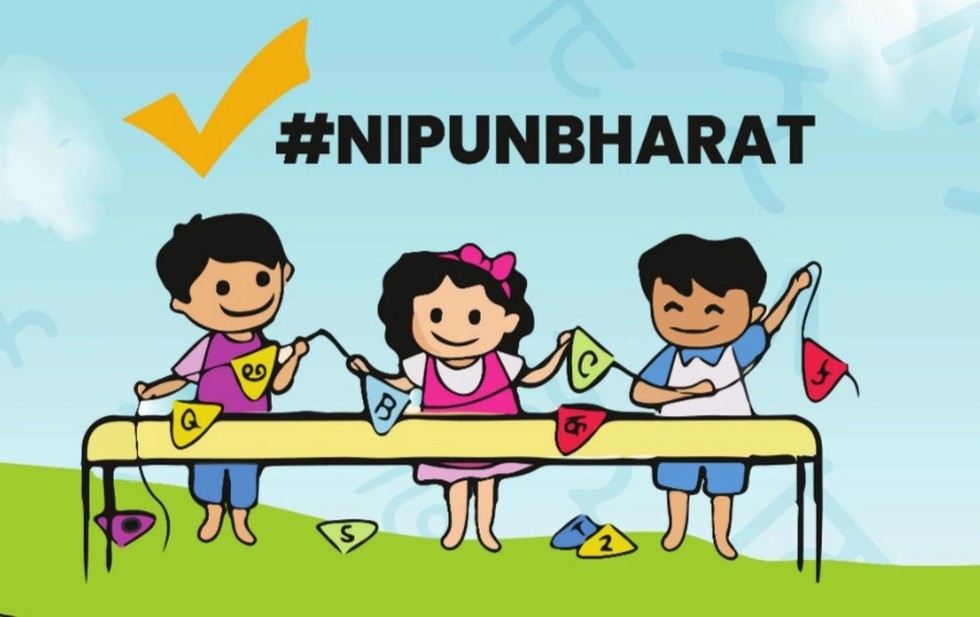
About NIPUN Bharat Mission:
- The National Initiative for Proficiency in Reading with Understanding and Numeracy (NIPUN Bharat) Bharat mission was launched by the Ministry of Education.
- The mission will focus on children of the age group of 3 to 9 years including preschool to Grade 3.
- A five-tier implementation mechanism will be set up at the National- State- District- Block- School level in all States and UTs, under the aegis of the centrally sponsored scheme of Samagra Shiksha.
- The goals and objectives of the mission are required to be achieved by all Govt., Govt. Aided and Private Schools so that universal acquisition of Foundational Literacy and Numeracy (FLN) skills can be achieved by 2026-27.
- It has been launched under the aegis of the centrally sponsored scheme of Samagra Shiksha, will focus on providing
- Access and retaining children in foundational years of schooling; teacher capacity building; development of high quality and diversified Student and Teacher Resources/Learning Materials; and tracking the progress of each child in achieving learning outcomes.
Prelims Pointers
July 29, 2024

About Livermorium:
- It is part of the “superheavy” category of elements.
- These are elements that exist beyond the known elements in the periodic table and are typically very unstable.
- It is artificially produced transuranium elementof atomic number 116.
- In 2000 scientists at the Joint Institute for Nuclear Research in Dubna, Russia, and the Lawrence Livermore National Laboratory in Livermore, California, announced the production of atoms of livermorium when curium-248 was fused with calcium-48.
- It does not occur naturally in the Earth’s crust.
- How Was Element 116 Created?
- Researchers used a powerful particle accelerator to smash together titanium-50 atoms.
- They needed to produce a highly intense beam of titanium-50 and target it at a thin layer of plutonium to produce livermorium.
- Over 22 days, they managed to create two atoms of livermorium, marking a significant achievement.
- Significance: The creation of livermorium is an important step because it demonstrates a new method that could be used to create even heavier elements, such as element 120.
- The success of this experiment could provide valuable insights into the behavior of atoms at their heaviest.
Prelims Pointers
July 29, 2024

About Jupiter Icy Moons Explorer:
- It is a European Space Agency (ESA) mission to explore Jupiterand three of its icy moons: Europa, Callisto and Ganymede.
- Objective: The probe aims to explore the possibilities of life in space and the origins of Jupiter.
- It will monitor Jupiter’s complex magnetic, radiation, and plasma environment in depth and its interplay with the moons.
- Approximately four years after its arrival at the Jupiter system, JUICE will move into orbit around the gas giant's largest moon, Ganymede, to conduct the most extensive exploration of this body, which is larger than the solar system's smallest planet, Mercury.
- It will become the first probe to orbit a planetary moon other than Earth's.
- Features
- It has been fuelled with mono-methyl hydrazine (MMH) fuel and mixed oxides of nitrogen (MON) oxidizer, which ignites when the two come in contact. Juice will use this propellant to make critical course manoeuvres on its journey.
- It will be packed with 10 instruments and will characterize Jupiter’s ocean-bearing icy moons.
- It will be launched onboard the Ariane-5 rocket, a workhorse for the European Space Agency.
Prelims Pointers
July 29, 2024
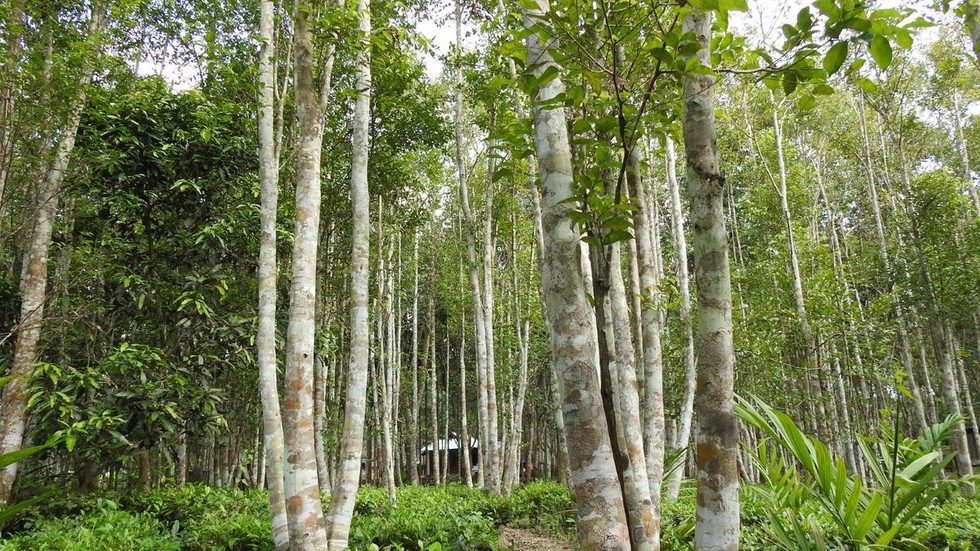
About Agarwood:
- Agarwood or Gaharu as it is known in many Asian countries is resinous heartwood that occurs in trees belonging to the genus Aquilaria.
- It is a fast-growing, subtropical forest tree.
- It grows at elevations from a few meters above sea level to about 1000 meters, with approx. 500 meters being most ideal.
- Distribution: West Bengal and North-Eastern States of India namely Assam, Meghalaya, Manipur, Mizoram,Arunachal Pradesh and Nagaland.
- Required Climatic condition
- This is a tropical tree which grows over high rainfall tracts throughout humid regions.
- The region experiences low temperature variations between 20ºC to 28ºC and relative humidity around 80%.
- Soil: It grows over sandy loam and slightly acidic soils.
- Application
-
- Highly valued for its traditional uses as incense, the extracts (agarwood oil) of plants are also used in water-based perfumes.
- It is also utilized in the aroma industry, medicine preparations, preparations of air fresheners and purifiers.
- The essential oil extracted from agarwood has anti-inflammatory, anti-rheumatic, analgesic and antioxidant properties.
- Conservation status
- IUCN: Critically Endangered
- CITES: Appendix II
July 28, 2024
Prelims Pointers
July 28, 2024
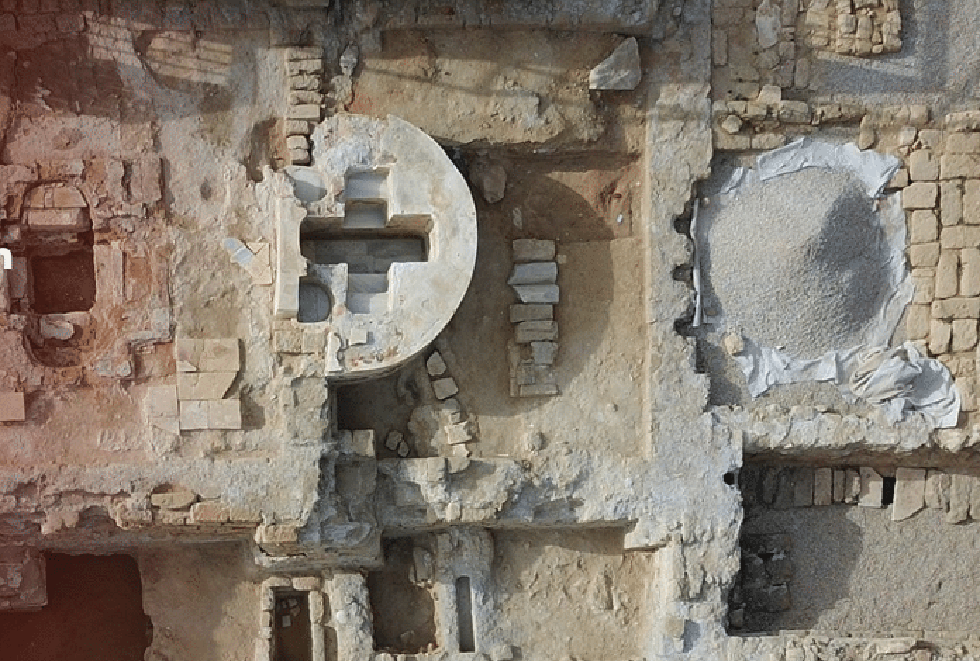
About Tell Umm Amer Heritage site:
- It is situated on the coastal dunes of the Nuseirat Municipality, just 10 km south of Gaza city.
- It is an ancient Christian monastery founded in the fourth century by Hilarion the Great (291-371 CE).
- It is also known as the ‘Monastery of Saint Hilarion.
- It was the first monastic community in the Holy Land, laying the groundwork for the spread of monastic practices in the region.
- The monastery occupied a strategic position at the crossroads of major trade and communication routes between Asia and Africa.
Key facts about UNESCO
- UNESCO stands for United Nations Educational, Scientific and Cultural Organization.
- It is specialized agency of the United Nations(UN).
- The constitution, which entered into force in 1946, called for the promotion of international collaboration in education, science, and culture.
- The agency’s permanent headquarters are in Paris, France.
- Parent Organisation- United Nations Economic and Social Council
- The primary goals of UNESCO are to contribute to peace and security by promoting collaboration among nations through education, science, and culture, and to promote sustainable development and intercultural dialogue.
- UNESCO believes that these areas are crucial for building a more just, peaceful, and inclusive world.
Prelims Pointers
July 28, 2024

About Indexation:
- It is the process of adjusting the original purchase price of an asset or investment in order to neutralise the impact of inflation on it.
- Inflation reduces the value of money over time, and therefore, when an asset is sold or an investment is redeemed, indexation helps in arriving at the cost of acquisition with the impact of inflation over the holding period factored in.
- The cost of acquisition thus arrived at, is called the indexed cost of acquisition. It resets the base for calculation of gains or losses from the sale or redemption.
- The returns calculated on the indexed cost of acquisition are generally seen as more realistic than absolute gains calculated on the basis of the actual price at the time of purchase.
- Indexation is an efficient way of preventing draining of your returns on investments in the form of taxes.
- Indexation is applicable to long-term investments, which include debt funds and other asset classes. Indexation helps in adjusting the purchase price of the investments.
What is capital gains tax?
- A capital gains tax is a tax imposed on the sale of an asset. It is calculated as the difference between the sale price of the property and its purchase price.
- Any gain or loss incurred from the sale of a house property may be subject to tax under the 'Capital Gains' head.
- Types: Depending on the period an asset is held with the owner, there are two types of capital gains - Short-term Capital Gains and Long-term Capital Gains.
Prelims Pointers
July 28, 2024

About Notified Disaster:
- In India, the Disaster Management Act, 2005,defines a disaster as a "catastrophe, mishap, calamity or grave occurrence" arising from natural or man-made causes that results in substantial loss of life, destruction of property, or damage to the environment.
- Currently 12 disasters are classified as Notified Disaster namely: Cyclone, drought, earthquake, fire, flood, tsunami, hailstorm, landslide, avalanche, cloud burst, pest attack and frost and cold wave.
- Presently the notified list of disasters eligible for National Disaster Response Fund/State Disaster Response Fund (SDRF) assistance.
What are Heat waves?
- The basic criteria for IMD to declare a heatwave are when a place's temperature exceeds 40 degrees Celsius (°C) in the plains, 37°C in coastal areas, and 30°C in the hills.
- These temperature values are the thresholds established by the IMD for the declaration of heatwaves in India.
Key facts about National Disaster Management Authority
- The National Disaster Management Authority (NDMA) plays a crucial role in laying down policies, plans, and guidelines for disaster management in India.
- It aims to promote a national resolve to mitigate the damage and destruction caused by natural and man-made disasters through sustained and collective efforts.
Prelims Pointers
July 28, 2024
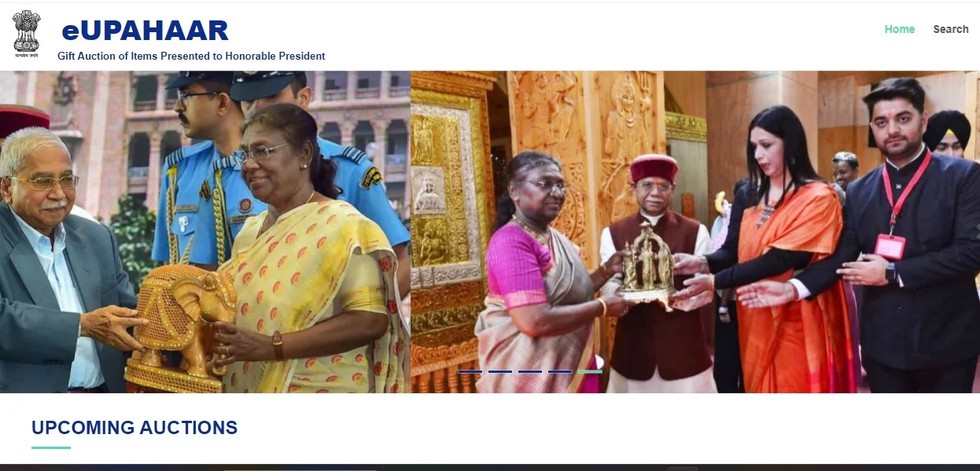
About E-Upahaar Portal:
- It is an auction portal of the President's Secretariat (office of the President of India), Rashtrapati Bhavan for auctioning of gift items presented to Hon'ble President and former Presidents of India.
- The portal was launched by the President of India, on July 25, 2024,
- It is conceptualized, designed, developed and hosted by National Informatics Centre (NIC), Ministry of Electronics and Information Technology.
- The aim of this initiative is not only to increase citizen engagement but also to support noble causes. All proceeds from the auction will be donated to help children in need.
Key facts about the National Informatics Centre
- It was established in 1976 to provide technology-driven solutions to Central and State Governments.
- It works under the Union Ministry of Electronics and Information Technology(MeitY).
- The NIC's primary focus is to provide e-Government solutions and support to various government departments.
- NIC, through its ICT Network, “NICNET”, has institutional linkages with all the Ministries /Departments of the Central Government, 36 State Governments/ Union Territories across India.
- The following major activities are being undertaken:
- Setting up of ICT Infrastructure
- Implementation of National and State Level e-Governance Projects/Products
- Consultancy to the Government departments
- Research & Development
Prelims Pointers
July 28, 2024

About Asian Disaster Preparedness Centre:
- It is an autonomous international organization established in 1986.
- It is for cooperation in and implementation of disaster risk reduction and building climate resilience in Asia and the Pacific region.
- Vision: Safer communities and sustainable development through disaster risk reduction" and its geographical remit is Asia and the Pacific
- Member countries: India, Bangladesh, Cambodia, China, Nepal, Pakistan, Philippines, Sri Lanka and Thailand are the founding members.
- Governance: The organs of ADPC, defined in the ADPC Charter include the Board of Trustees, the Executive Committee, the Advisory Council and the Regional Consultative Committee (RCC), which are the governing or advisory bodies of ADPC.
- ADPC's international Charter was signed by nine founding member countries and it was put into effect in 2018 through the ratification by all the founding members.
- As of January 2020, ADPC is operating as an autonomous international organization governed by the Board of Trustees.
- Headquarter: Bangkok, Thailand and sub-centers in the country of operations are the operational parts of ADPC.
Prelims Pointers
July 28, 2024
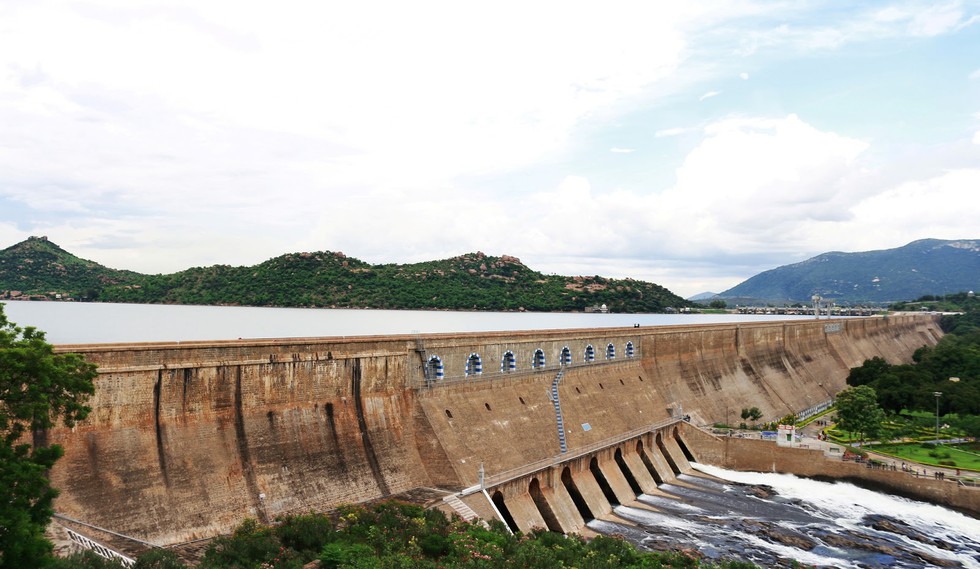
About Mettur Dam:
- It is one of the largest dams in India, built in 1934.
- Location: It is located at Mettur, District Salem in Tamil Nadu.
- It is constructed in a gorge, where the Kaveri River enters the plains.
- Features:
- It is a masonry gravity dam.
- The length of the dam is 1700 m with a maximum level of 120 feet and a capacity of 93.4 tmc ft.
- The dam creates Stanley Reservoir.
- Set at the foot of the dam in 1937 is the Mettur hydroelectric and thermal power plant, with a hydropower generation of 32 MW.
- There is a park adjoining the Dam on the opposite side with lawns and fountains, and also has the Muniappan/Aiyanar statuein the vicinity.
- It provides irrigation facilities to parts of Salem, the length of Erode, Namakkal, Karur, Tiruchirappali, and Thanjavur districts for 271,000 acres (110,000 ha) of farmland.
Key Facts about Kaveri River:
- Kaveri River, also known as Cauvery River, is one of the major rivers of southern India, which is considered sacrosanct by the Hindus.
- Course:
- It rises on Brahmagiri Hill of the Western Ghats in southwestern Karnataka, at an elevation of 1.341m (4,400 ft.) above mean sea level.
- It flows in the south and east through Karnataka and Tamil Naduand then across the southeastern lowlands, and finally surrenders in the Bay of Bengal through two principal mouths.
- The total length of the river from origin to outfall is 800 km.
- It is bounded by the Western Ghats on the west, by the Eastern Ghats on the east and south and by the ridges separating it from the Krishna basin and Pennar basin on the north.
- The Cauvery basin extends over the states of Tamil Nadu, Karnataka, Kerala,and the Union Territory of Puducherry, draining an area of 81,155 Sq.km
- Tributaries: It's important tributaries joining from left are the Harangi, the Hemavati, the Shimsha, and the Arkavati, whereas the Lakshmantirtha, the Kabbani, the Suvarnavati, the Bhavani, the Noyil, and the Amaravati joins from right.
- Dams: Dams constructed across the river are Krishna Raja Sagara Dam,and Mettur Dam, and the Banasura Sagar Dam on the Kabini River, which is a tributary of the Kaveri River.
Prelims Pointers
July 28, 2024

About Mako Missile:
- It is an air-launched hypersonic multi-mission missile.
- It was developed by Lockheed Martin, an American aerospace and defense manufacturer.
- It will be the world’s first hypersonic weapon that could be fired from the internal weapons bay of the fifth-generation stealth fighter jets: the F-35 and the F-22 Raptor.
- It can be used for a wide range of missions, including targets at sea, in the air, and on land.
- Features:
- Named after the fastest shark in the seas, Mako blazes down on time-sensitive targets, and it penetrates advanced air-defense systems to engage these high-value targets at or below hypersonic speeds, depending on mission requirements.
- It can achieve speeds over Mach 5 with high maneuverability, making it difficult to intercept.
- It represents one of Lockheed Martin’s first generation of missiles designed within an entirely “digital engineering ecosystem”.
- It weighs close to 590 kg with a diameter of 13 inches and an approximate length of 4 meters.
What are Hypersonic Missiles?
- A hypersonic missile is a weapon system which flies at least at the speed of Mach 5 (five times the speed of sound)and is manoeuvrable.
- These missiles are extremely fast and far harder for surface-to-air missile defence systems to target.
Prelims Pointers
July 28, 2024

About Assam Rifles:
- It is one of the six central armed police forces (CAPFs).
- It is the only paramilitary force with a dual control structure.
- While the administrative control of the force is with the Ministry of Home Affairs, its operational control is with the Indian Army, which is under the Ministry of Defence.
- It has a dual role of maintaining internal security in the Northeastern region and guarding the Indo-Myanmar Border.
- History:
- It is the oldest paramilitary force of India.
- It came into being in 1835, as a militia called the ‘Cachar Levy’.
- With approximately 750 men, this force was formed to primarily protect British Tea estates and their settlements against tribal raids.
- Over the period of time, it was expanded and rechristened Assam Military Police Battalion, with additional battalions.
- It was later renamed as Assam Rifles.
- The post-Independence role of the Assam Rifles continued to evolve, ranging from
- conventional combat role during Sino-India War 1962,
- operating in foreign land as part of the Indian Peace Keeping Force (IPKF) to Sri Lanka in 1987 (Op Pawan)
- to the peacekeeping role in the North-Eastern areas of India.
- Assam Rifles has grown substantially over the years, from 17 battalions in 1960 to 46 battalions at present.
- Fondly called ‘Friends of the North East People’, the force is the highest awarded and decorated paramilitary force in both pre- and post-independent India.
- The force is commanded by an officer of the rank of Lieutenant General of the Army.
- The highest Headquarter (HQ) of the force, known as the HQ Directorate General of Assam Rifles, is located at Shillong.
- The HQs of all other Central Para Military Forces are located in Delhi.
Prelims Pointers
July 28, 2024
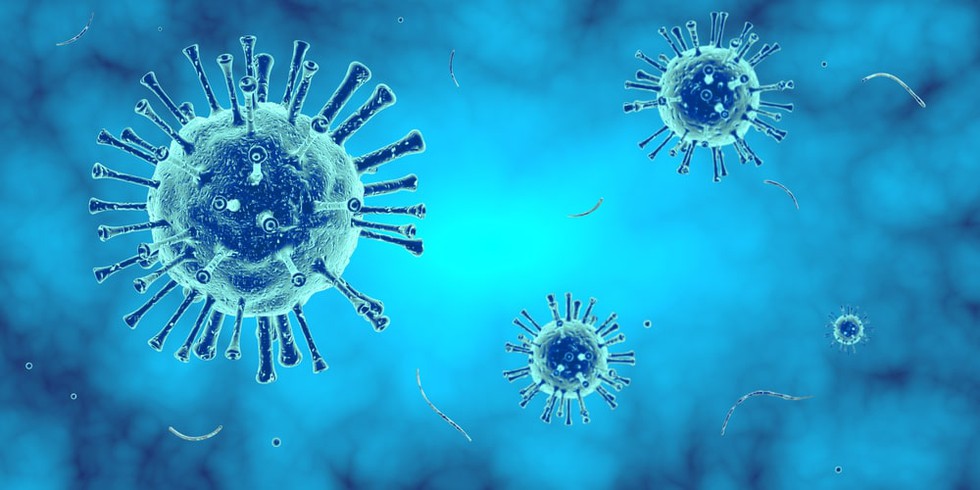
About Integrated Disease Surveillance Programme (IDSP):
- It is a decentralized, state-based surveillance programme in the country.
- It was launched with World Bank assistance in November 2004 by the Ministry of Health and Family Welfare, Government of India.
- Objectives: To strengthen/maintain a decentralized laboratory-based IT enabled disease surveillance system for epidemic-prone diseases to monitor disease trends and to detect and respond to outbreaks in the early rising phase through trained Rapid Response Teams (RRTs).
- Programme Components:
- Integration and decentralization of surveillance activities through the establishment of surveillance units at the Centre, State, and District levels.
- Human Resource Development: Training of State Surveillance Officers, District Surveillance Officers, RRT, and other medical and paramedical staff on principles of disease surveillance.
- Use of Information Communication Technology for collection, collation, compilation, analysis, and dissemination of data.
- Strengthening of public health laboratories.
- Inter sectoral coordination for zoonotic diseases.
- Data Management:
- Under IDSP, data is collected on epidemic-prone diseases on a weekly basis (Monday–Sunday).
- The information is collected in three specified reporting formats, namely “S” (suspected cases), “P” (presumptive cases), and “L” (laboratory confirmed cases), filled by Health Workers, Clinicians, and Laboratory staff, respectively.
- IDSP receives disease outbreak reports from the States/UTs on a weekly basis. Even NIL weekly reporting is mandated, and compilation of disease outbreaks/alerts is done on a weekly basis.
- The weekly data gives information on the disease trends and seasonality of diseases.
- Whenever there is a rising trend of illnesses in any area, it is investigated by the RRTs to diagnose and control the outbreak.
- Data analysis and actions are being undertaken by respective State/District Surveillance Units.
Prelims Pointers
July 28, 2024
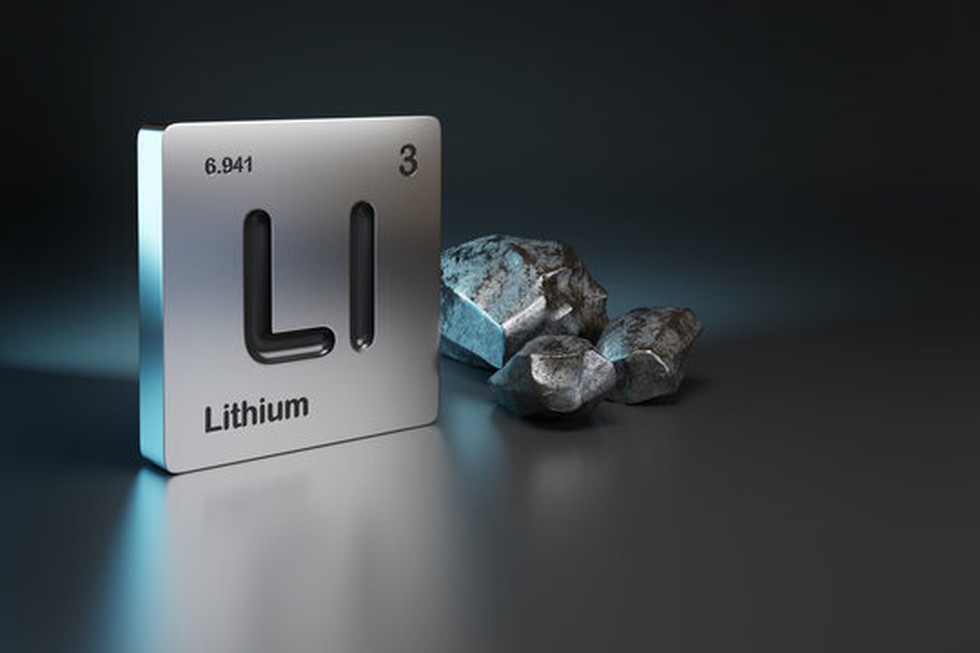
About Lithium:
- It is a chemical element with the symbol Liand atomic number 3.
- Classified as an alkali metal,lithium is a solid at room temperature.
- It is the lightest of the solid elements.
- It is soft, white, and lustrous.
- It reacts vigorously with water.
- It has a body-centered cubic crystal structure.
- Occurrence:
- Lithium constitutes about 002 percent of Earth’s crust.
- Being highly reactive, it does not occur as the metal in nature, but is found combined in small amounts in nearly all igneous rocks and in the waters of many mineral springs.
- Spodumene, petalite, lepidolite, and amblygonite are the more important minerals containing lithium.
- Major Reserves:Lithium reserves are concentrated in the lithium triangle in South America–Argentina, Bolivia, and Chile, with 50% of the deposits concentrated in these regions.
- Production: In 2023, Australia was the world leader in terms of lithium mine production, with Chile and China ranked second and third.
- Uses:
- The most important use of lithium is in rechargeable batteries for mobile phones, laptops, digital cameras, and electric vehicles.
- Lithium is also used in some non-rechargeable batteries for things like heart pacemakers, toys and clocks.
- Lithium metal is made into alloys with aluminium and magnesium, improving their strength and making them lighter.
- A magnesium-lithium alloy is used for armour plating.
- Aluminium-lithium alloys are used in aircraft, bicycle frames and high-speed trains.
- Lithium oxide is used in special glasses and glass ceramics.
- Lithium chloride is one of the most hygroscopic materials known and is used in air conditioning and industrial drying systems (as is lithium bromide).
- Lithium hydride is used as a means of storing hydrogen for use as a fuel.
- Lithium carbonate is used in drugs to treat manic depression.

